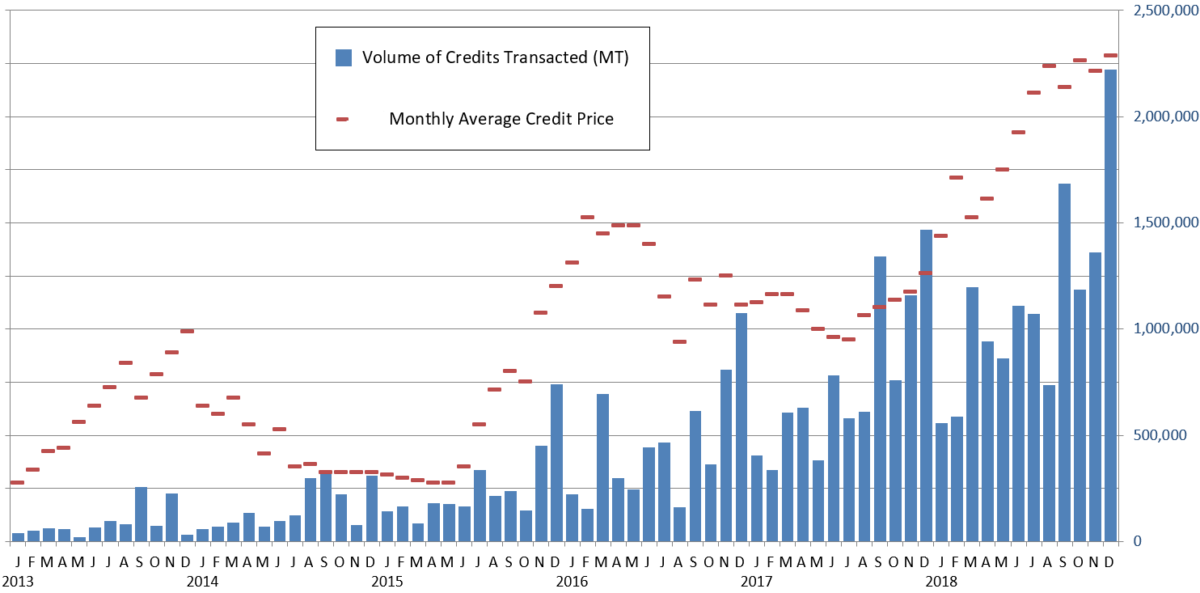This post was written by Josh Weiner, Solar Expert Witness & Solar Engineering Expert. Mr. Weiner has been at the forefront of the solar energy industry for over 20 years and is an industry leader on solar-plus-storage engineering & design. Josh’s expertise spans both in-front of and behind-the-meter initiatives including residential, commercial, utility, grid-scale, and ev charging solar and storage applications.
On January 31, 2019, the CPUC (California Public Utilities Commission) signed into law the most recent changes to the long-standing NEM (Net Energy Metering) tariff. While our white paper describes many of the financial benefits to the decision, we have received a variety of inquiries from industry stakeholders from across the value chain with interesting use cases of this policy change that are worth sharing. Like a fine, red wine, these ground-breaking policies often only get better with age, setting new precedents for future policies to come.
Electric Vehicle Chargers
For example, we reviewed a solar + storage + EV charging commercial project in California that was applying for EV charging credits from the State (contact us at blogs@sepisolar.com to learn more about these lucrative credits that start at ~$0.19/kWh!). In addition to DC-coupling the solar + storage, the developer also wanted to DC-couple the EV chargers.
Upon deeper analysis by SepiSolar, it became clear that the CPUC’s final decision sets a precedent for any DC-coupled device (not just storage) that charges exclusively from renewables (including EV chargers), since these EV charging credits get more valuable (anywhere up to ~$0.25/kWh) the more they charge from renewables. Based on our financial calculations, the difference in monetary ($) values between grid-charged-EV’s and PV-charged-EV’s is over 35%, so charging EV’s from PV in a DC-coupled framework adds a significant bonus to the ROI (Return on Investment) of the project.
SREC’s & AC Limitations on the Utility Grid
Another example comes to us from the east coast, where Pepco is evaluating SREC’s (Solar Renewable Energy Certificates) for energy storage as well as restricting the amount of PV power on their grid, due to infrastructure capacity constraints. Among the questions were: can SREC’s could be granted to exports from batteries that are exclusively charged from PV?
We are still going through the process of getting these approvals on specific projects, and so far, the answer appears to be a resounding “yes”! Not only do similar rules apply for the issuance of NEM and SREC credits, but de-rating the AC nameplate of the inverter (or, alternatively, “super-sizing” the DC nameplate rating of the PV system) appear to allow these projects to interconnect with the utility grid in a far more cost-effective manner. This is inherently because batteries are less expensive to install than infrastructure upgrades by utility companies.
In this particular use case, we are working on getting a 250 kW PV system approved with only a 50 kW AC interconnection limit. The only way to do this (cost-effectively) is by using a DC-coupled, solar-only-charging 400 kWh rated battery. At a $300k price tag for the battery with a 3-month lead-time, this resolves several problems for the customer, including:
- Deferring a $500k “surprise” infrastructure cost from the utility (with a 10-month lead-time)
- Allowing the customer to retain 100% of the original PV system size needed to offset electricity usage
- Enabling demand charge reduction, which increases NPV and IRR
- Adding back-up and resiliency capability, so the battery can supply energy to on-site loads when the grid goes down
REAP Grants
Recently, we have come across a number of agricultural businesses (rural businesses and agriculture producers) throughout the US who are now asking SepiSolar to evaluate the implications of this DC-coupled NEM framework in the context of the lucrative REAP (Rural Energy for America Program) grant. For those of you who do not know, REAP is a USDA-administered grant that can offset up to 25% ($500,000) of the total installation costs of a renewable energy system.
The question is this: Does the REAP grant apply to energy storage components? We, at SepiSolar, believe it absolutely does, and we’ve just recently submitted a grant application claiming the storage as part of the renewable facility property. The jury is currently out, but we’ll report back with hard answers to this question as soon as we hear back from the USDA.
When we set out to get solar-only-charging, DC-coupled batteries approved by the CPUC for NEM purposes, one of the first risks we wanted to investigate was whether or not such a policy change would result in a lengthy legal battle, or legislative nightmare, in the event that new (or existing) laws needed to be created (or changed).
We quickly discovered that there was precedent for our request in the RPS Standards (see Renewable Portfolio Standards Eligibility Guidebook), since it described energy storage as an addition, or an “enhancement,” to the renewable facility property, if and only if that storage device only charges from a renewable resource. This was unbelievably fantastic news because it meant that the legal structure, definitions, and policies were already in place, and no laws or bills would be required. Nobody had simply exercised the laws that were evidently already in place…that is, until now.
This discovery implied not only that a solar-only-charging energy storage system could (and should) accrue NEM credits, but also that the very definition of storage as an “enhancement” to the renewable facility, makes it just as exciting as adding a tracker motor, ballast racking system, auxiliary or lightning electrode, fuse, breaker, wire, conduit, combiner box, or perhaps any piece of equipment to the solar energy system. Basically, the more boring the legal repercussions appeared, the more exciting the policy work became.
So, if solar-only-charging batteries are just another type of “combiner box,” and are effectively part of the solar energy system (as an addition or enhancement), why shouldn’t ITC, MACRS, and, of course, the REAP grant apply?
All of these policies and legal precedents serve to reinforce the direction that DC-coupled, solar-only-charging batteries are headed – into the mainstream, and as an integral part of the renewable generating facility itself. Storage, by itself, can of course be treated as a stand-alone system with all the benefits thereof, but by reinterpreting storage as an enhancement to a renewable generating system, we get to leverage all the rules, laws, and policies already in place for renewables. This is a great benefit to storage, since renewables effectively give storage a legal and policy runway for accelerated adoption, without having to go through all the time, pain, and politics that solar and renewables had to go through (and are still going through). It’s 2 technologies for the legal / policy price of 1. That’s a good deal, and we should stop leaving money on the table for our customers.
As always, if you have more questions, please submit them in the comments section or send them to blogs@sepisolar.com. We’ll continue to keep you up to date on our progress in all these efforts and projects, and we look forward to bringing ever more value to our valued clients.




